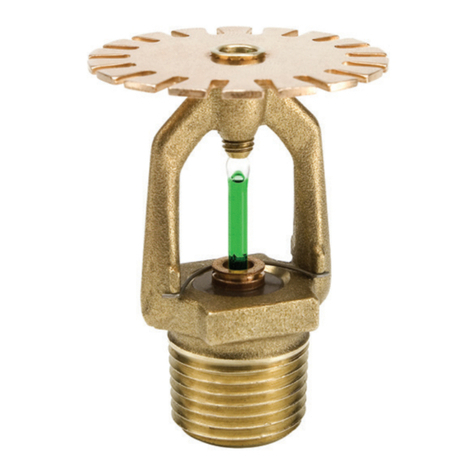
UNITED FIRE SYSTEMS - NITROGEN-PAC™ MODEL SC-W
INSTALLATION, COMMISSIONING, AND MAINTENANCE MANUAL
REVISION 1.01 MAR 2021 - P/N 30-NPWICM-000
viii
IMPORTANT NOTICES TO INSTALLERS AND USERS
This manual must be read thoroughly and completely understood before installation and operation of UNITED Fire
Systems NITROGEN-PAC™ equipment. All appropriate safety standards for handling of gases as determined by local or
national laws and regulations should be followed at all times.
WARNING
Do not operate assembly if damage occurred during shipping, handling, or use. Contact UNITED Fire Systems
immediately. Failure to do so could result in death, personal injury, or serious property damage.
General Safety Information
IMPORTANT
Read all of the safety information in this manual before operating this equipment. Use of the equipment in a manner not
specified within this manual may impair the protection provided by the equipment and could result in an unplanned
release of pressure, which may cause serious injury or damage. Only competent personnel, who have been trained,
qualified, and approved by UNITED Fire Systems should perform commissioning, servicing, and repair procedures.
When handling, installing, or operating this equipment, personnel must employ safe engineering practices and observe all
related local regulations, health, and safety procedures, and legal requirements for safety.
Ensure that the equipment is depressurized and electrically isolated before carrying out any of the scheduled
maintenance instructions specified in this manual.
Nitrogen is not a poisonous gas. However, in a concentrated form, there is a risk of asphyxiation. The Model SC-W
assembly produces both a flow of nitrogen and a flow of oxygen enriched air which quickly disperses in the atmosphere.
However, do not directly inhale the output gas from the outlet pipe.
NITROGEN-PAC™ Model SC-W equipment is classified as non-hazardous for transportation purposes and as non-
flammable for fire regulations. This equipment is for indoor use only. Do not operate outdoors.
Specific procedures must be followed for maintenance of the NITROGEN-PAC™ Model SC-W system and the equipment
to which the assembly is connected. Appropriate labels must be continuously displayed in all areas where personnel
might be exposed to a nitrogen atmosphere.



























